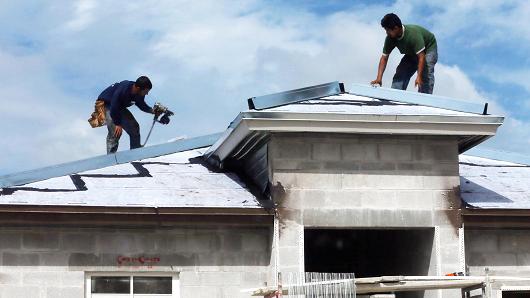
The biggest complaint in the spring homebuying season was simply that there weren’t enough homes to buy. Demand is strong for housing, but listings are low and getting lower. That supply strain has put strong upward pressure on home prices in most markets, but apparently not in all markets, according to a new report.
There were just 2.14 million homes for sale at the end of April, which at the current sales pace represents 4.6 months’ supply of inventory, according to the National Association of Realtors. Six months is considered a balanced market between buyer and seller. Some local markets are seeing less than one month’s supply.
Inventory is worst at the low end of the market, but it also continues to fall for trade-up homes. The number of starter homes on the market in April dropped by 12.3 percent from April 2015, according to a report from Trulia, a home listing website. That pushed prices higher, so that first-time homebuyers overall will need to spend 1.3 percent more of their income on a home than last year. The number of trade-up homes on the market decreased by 11.5 percent, meaning those buyers will have to pay just under 1 percent more of their incomes on housing.
“A lack of starter home affordability is becoming problematic in places outside of California,” Trulia’s chief economist Ralph McLaughlin wrote in the report. “Starter home affordability is down most in Oakland, CA, but is beginning to take a hit in Denver, Portland, Seattle, and central Florida.”
That is not, however, the case everywhere. Of the nation’s 100 largest metropolitan housing markets, 1 in 5 are seeing falling demand for starter homes, which has offset the tight supply, according to Trulia. Home prices there are actually falling. Cities like Columbia, South Carolina, Kansas City, Missouri, Hartford, Connecticut, and Madison, Wisconsin, are seeing drops in starter home inventory and in prices.
Demand for starter homes is falling for several reasons. First and foremost is that investors are not as active as they were during the housing crash. In addition, starter homes are not affordable to entry-level buyers in several markets.
“Many would-be young homebuyers tell us that saving up for a down payment and finding a suitable home are obstacles that are keeping them from buying a home, even though they aspire to do so,” McLaughlin said.
While home prices are still rising, the gains are shrinking. That may be due to a shift of buyers away from pricey coastal markets and more toward affordable markets in the Midwest and South. While the official May sales count from the Realtors comes out Wednesday morning, Redfin, a real estate brokerage, said sales last month hit their fastest pace in at least seven years. The typical home went under contract in 42 days, a full week faster than a year earlier, and the lowest median days on market reported since Redfin began tracking the metric in 2009, according to a report.
“After almost a decade of under-supplied housing stock, competition is fierce,” said Redfin chief economist Nela Richardson. “What’s new in 2016 is that we’re seeing the intensity of fast sales and bidding wars even in affordable markets like Grand Rapids and Omaha, where the typical home sold within two weeks last month.”




